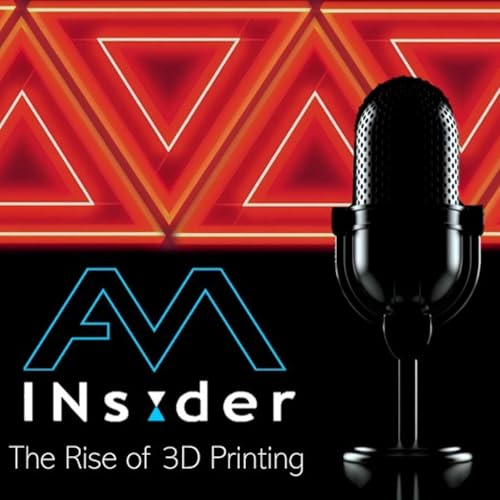
The Genesis and Future of 3D Printing
Failed to add items
Add to basket failed.
Add to Wish List failed.
Remove from Wish List failed.
Follow podcast failed
Unfollow podcast failed
-
Narrated by:
-
By:
About this listen
Send us a text
This episode features an interview with Rajeev Kulkarni, a seasoned professional in the additive manufacturing industry, who shares his extensive experience and insights into the history, evolution, and future of 3D printing. Rajeev discusses his early contributions to the field, including the invention of support generation for SLA and the creation of the STL file format, highlighting the collaborative effort required for innovation and the importance of focusing on problem-solving and applications rather than just technology. He also offers advice for newcomers and executives in the industry, emphasizing the need to view 3D printing as a manufacturing technology and to integrate it within a broader digital ecosystem rather than positioning it against traditional methods. The conversation touches upon the impact of AI and the rewarding aspects of 3D printing, particularly in healthcare.
- Humble and Challenging Beginnings: 3D printing began in the early 1990s from a state of "nothing," facing significant challenges such as a lack of 3D CAD design, expensive software, and the absence of standard formats, which led to the creation of the STL format. Computers were also slow, sometimes taking overnight to slice a file.
- Evolving Industry Vision: Initial visions for 3D printing centered on accelerated product development, toolless manufacturing, and customization/one-off production. The concept of on-demand and distributed manufacturing emerged later as the technology evolved and customers presented these possibilities.
- Innovation Through Collaboration and Iteration: The industry's rapid progress from creating the first 3D printers to establishing business models in industries like hearing aids and jewelry within 8-10 years was a multidisciplinary, cross-functional, and collaborative effort. Success hinged on being nimble and iterative, as customers often did not know what to ask for in a disruptive technology. Rajeev Kulkarni himself invented support generation for Stereolithography (SLA), drawing inspiration from electric pole designs.
- Focus on Applications and Solutions, Not Just Technology: The core principle for success is that "technology is the cost and the application is the revenue". Focusing on specific applications and customer solutions that address real-world problems is paramount, as demonstrated by the long-term success in sectors like dental and hearing aids.
- No Single "Killer App" or "Inflection Point": The industry has not experienced a singular "inflection point" or "killer app." Instead, successful applications like aligners, hearing aids, dental, and jewelry have achieved significant penetration through a "grind" that takes years or decades to replace complex workflows and achieve perfection.
- "Manufacturing," Not "Printing": A significant disservice to the industry is referring to it as "printing" instead of "manufacturing." Executives and professionals must understand that replacing or enhancing manufacturing workflows is a complex undertaking, not a simple printing task, and requires a manufacturing-oriented mindset to succeed.
- Complementary, Not Replacement, Approach: Positioning 3D printing against traditional manufacturing is often the "wrong approach." The real value of 3D printing lies in enhancing and complementing traditional methods, such as accelerating design cycles, producing complex internal features, or consolidating multiple part assemblies.
- The Importance of the Entire Ecosystem: The success of 3D printing extends far beyond the printer itself, encompassing a vast ecosystem including design software, reverse engineering, pre-processing, materials, post-processi



